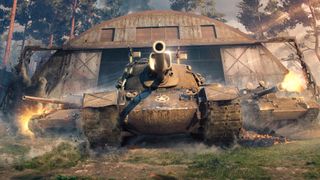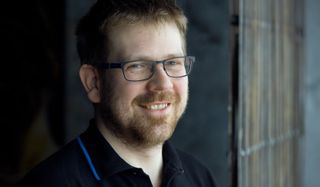
To try and get a real understanding of how World of Tanks 1.0 patch came to be, we sat down with Development Director Milos Jerabek to talk us through the multi-year journey that lead to the new Core engine and how it will change the game.

Q: So obviously you previously upgraded the Bigworld engine to try and keep it up to date. Can you talk a little about those upgrades, and what things were like before Core?
We’ve been working on tools to speed up the development, added new physics, reworked the audio engine, switched to a new graphical renderer with realistic shading/lighting models, and integrated the Audiokinetic Wwise sound engine…. However, these incremental changes could get us only so far. At some point we understood that we were running in a mad race against technology (which was always a few steps ahead) and couldn’t keep up.
Q: When was that point?
More than 3 years ago the engineering group started working on some pet projects, wanting to work on the cool new technology out there. Guys wanted the game to be on par with all the battlefields and call of duties out there—so they started working on completely new render, including the latest technologies like Global Illumination, PBR or Dynamic Water effects.
Q: What were the key problems you were trying to solve with the new engine. What were the key goals it had to fulfill?
Well, making it look great is one thing, keeping this visually stunning experience playable on older rigs is a whole other and much more challenging goal. With new graphics, we wanted to achieve both. We wanted players with 10+ years old rigs to continue playing and enjoying our game with remastered visuals—and that was our biggest struggle.
Q: What would you say is the biggest strength of the Core engine?
Our biggest strength is in possibility to scale for many different hardware setups and being ready to run on it massive multiplayer game from the day one.
Q: Let’s talk about behind the scenes, does the new engine make your jobs as developers easier?
Just for you to understand, when we developed the first maps, it took as more than 3 months to finish a map. Now we are able to rework one map in a little bit over a month—when I saw the numbers, I simply didn’t believe them.
For example, at the beginning, the guys were “painting” the roads manually, now we have a tool for it, which saves quite a few days per map, just by that.
Q: Creating a brand new engine is a big task. What was the biggest challenge?
Our biggest struggle was with producing all the maps and content. When we finished Monastery, our first map reworked to the new engine, we figured out the amount of work necessary. We didn’t wanna just release one or two maps per patch and keep updating, we wanted to make it properly. It was probably the biggest outsourcing and distributed development push in my career and a completely new thing for the team. The first months were tough, everything was slow, no documentation for the partners to be able to start the development. It was huge learning for all of us. But we managed and keep working with some of the partners even now, after the hardest part is done.
Q: What’s your personal favourite new addition in 1.0?
It might sound funny, but for me personally it is the water. When we played the first time on Monastery, we all ended up in the small lake there and kept driving and shooting in it. The dynamic water and water effects in combat are just breathtaking.
I still occasionally forget to play and just watch the waves going around the tank.
The biggest gaming news, reviews and hardware deals
Keep up to date with the most important stories and the best deals, as picked by the PC Gamer team.
